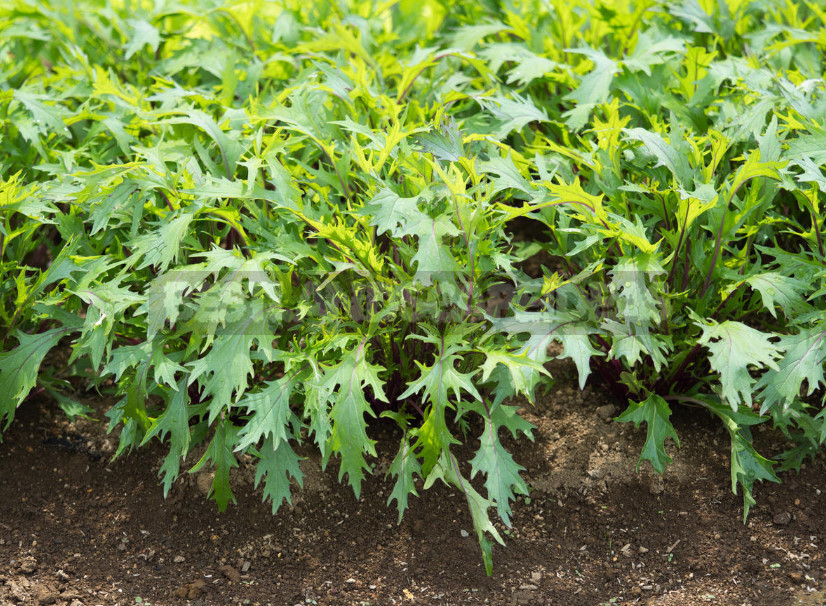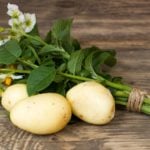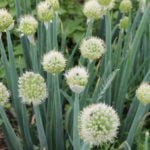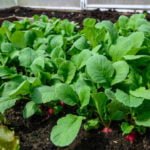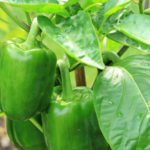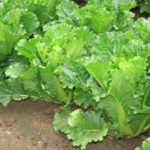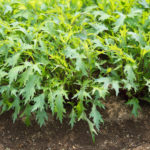Mizuna culture short day, so it’s best to develop in the spring, in late summer and autumn. In the first half of the summer, long lighting makes the plants shoot, so during this period, the bed should be covered with a dark non-woven material every day, reducing the light time to 10-12 hours. But the cold resistance of this vegetable will allow you to harvest until late autumn, and high returns with the simplest care will not leave indifferent any gardener – such “trouble-free” plants usually settle in the beds forever.
Maintenance
The main requirement of mizuna – sufficient moisture content in the soil, in which it will give you a gentle and juicy leaves. Therefore, water the plants regularly so that the soil in the garden all the time remained in a moderately moist state.
It is important to avoid sprinkling planting, especially cold water from the hose – in such conditions, the leaves of the Mizuna rot. Water the plants under the root with water heated in the sun, and after watering do not forget to loosen the aisles and weed out the weeds.
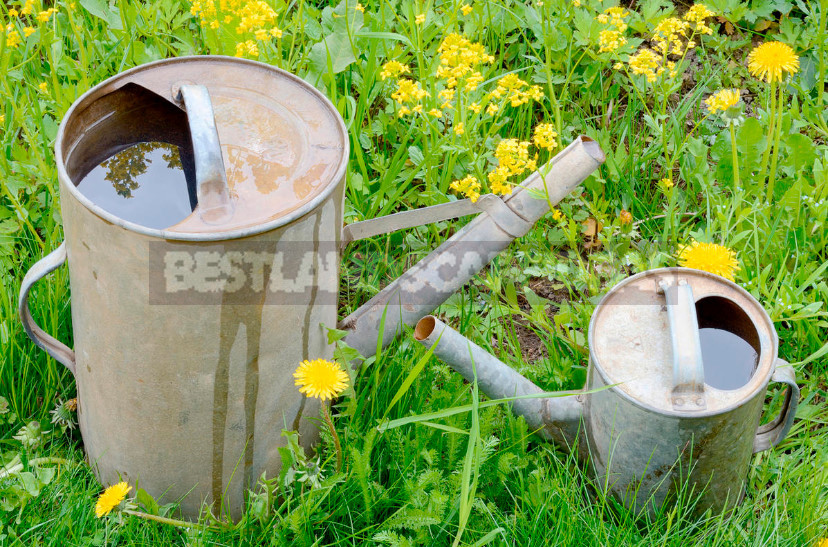
Mizuna very quickly gives the harvest and has the ability to accumulate nitrates in the leaves. Therefore, during the growth of the ripening culture, refrain from fertilizing with mineral drugs and prefer natural fertilizer.
After each cutting, feed the plants with a solution of fermented grass (1:10), on a bucket of which a glass of sifted wood ash is added. Asian perfectly responds to such a nutritious mixture and quickly builds up a new rosette of leaves.
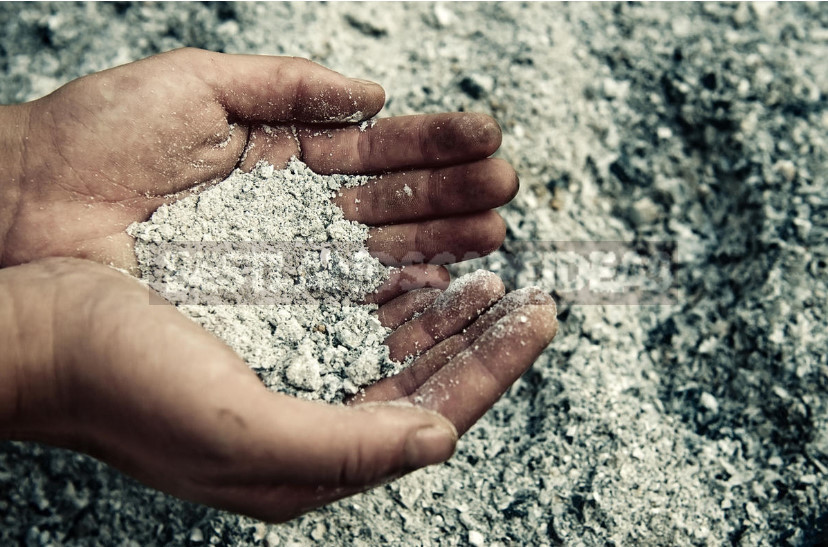
Wood ash is useful to you in the fight against pests of mizuna – Phyllotreta cruciferae, Delia radicum, Plutella xylostella and other harmful insects that encroach on the culture of the Cabbage family. To do this every 7-10 days sprinkle plants sifted ash in the dew.
Harvesting and storage
Depending on the variety, mizuna is ready for harvesting 30-60 days after sowing. For consumption you can pluck individual leaves or cut the sheet completely to the socket, leaving a small stalks – after 14-17 days you will again receive a portion of the crop.
Japanese cabbage after cleaning is best served immediately to the table in fresh form – to prepare a vitamin salad or decorate openwork leaves sandwiches. And if the well-dried leaves are tightly wrapped with cling film and put in the refrigerator, you can save the harvest for another week.
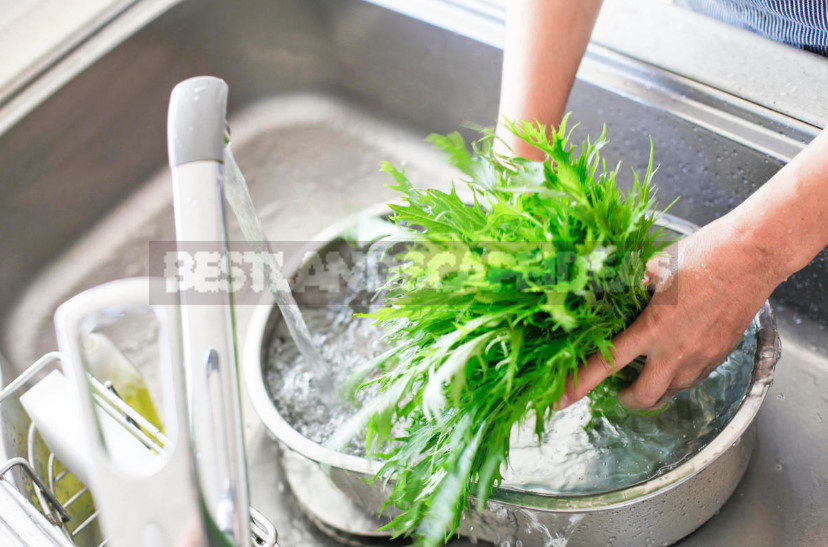
In addition, the leaves of the mizuna can be added to soups, to prepare fillings for pies and second courses – in stew they perfectly combine with meat and fish. For use in winter, the leaves are frozen, dried and pickled.
Mizuna on the windowsill
With the arrival of sustained cold snap sheet outlet Japanese cabbage dies. Therefore, if you want to prolong the consumption of vitamin greens, before the onset of frost, carefully dig out several plants from the bed and transplant them into flower pots filled with fertile soil.
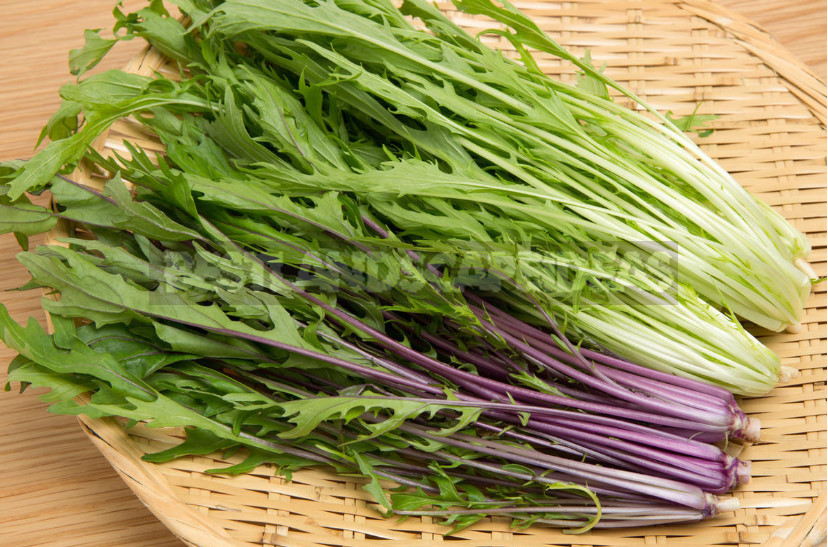
Potted plants should not be immediately brought into a warm room – hold them on the balcony or cool veranda until the frost, and then move to the windowsill. With regular watering and additional lighting mizuna will develop well in the indoor environment and delight you with abundant harvest throughout the cold season.
Varieties
Among the range of this unusual cabbage there are several varieties that have already proved themselves well in our climatic conditions. A generous harvest and excellent taste will please the Japanese cabbage called ‘Mizuna Green’, forming a lush leaf rosette up to 40 cm with very beautiful feathery leaves of bright green color. The variety is characterized by precocity and is ready for harvesting in 35-40 days after emergence.
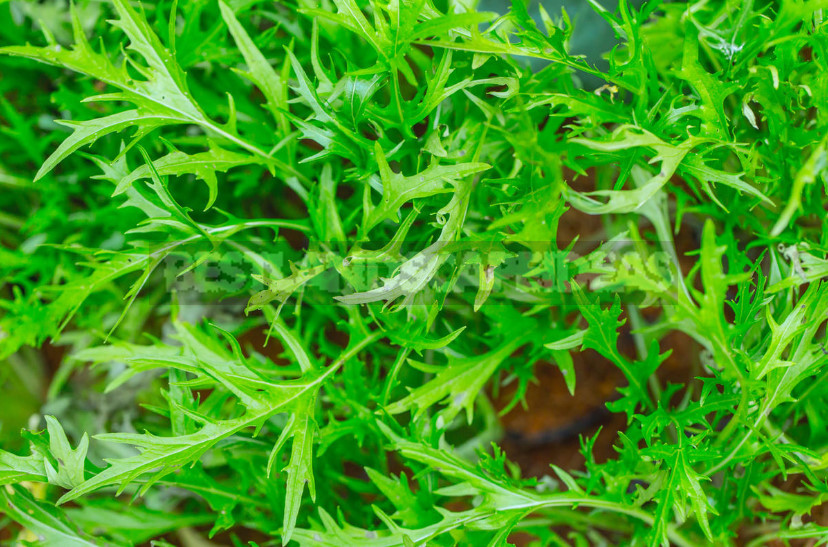
It is not inferior to the main characteristics of ‘Mizuna Red’, growing up to 40 cm in height and maturing 4-5 weeks after germination. Its distinctive feature is extremely decorative carved leaves of purple hue, which look very impressive both on the bed and on the table.
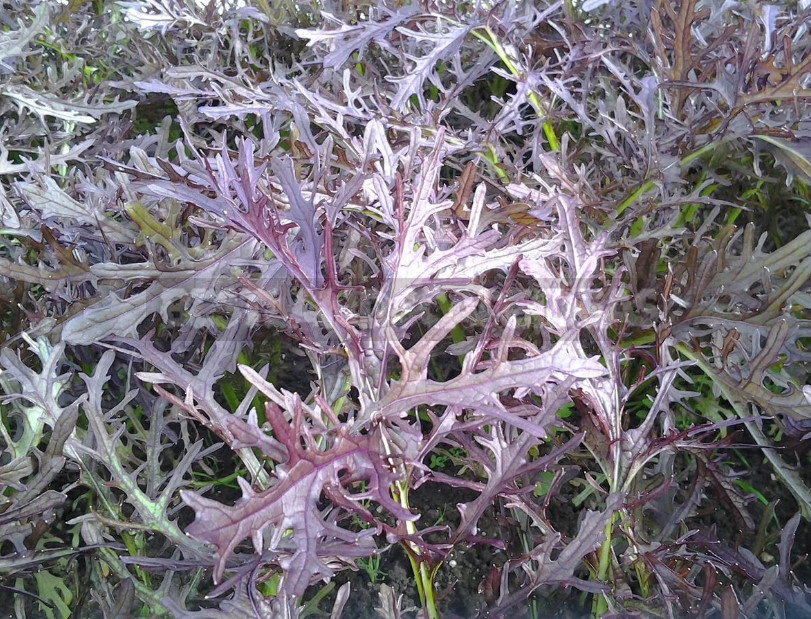
Be sure to highlight the mid-grade ‘Mermaid’, which forms a particularly large leaf outlet with a diameter of 50-70 cm and allows for one cut to get up to 1.7 kg of juicy vitamin greens from one plant. This variety has a high drought resistance and is less prone to shooting than others.
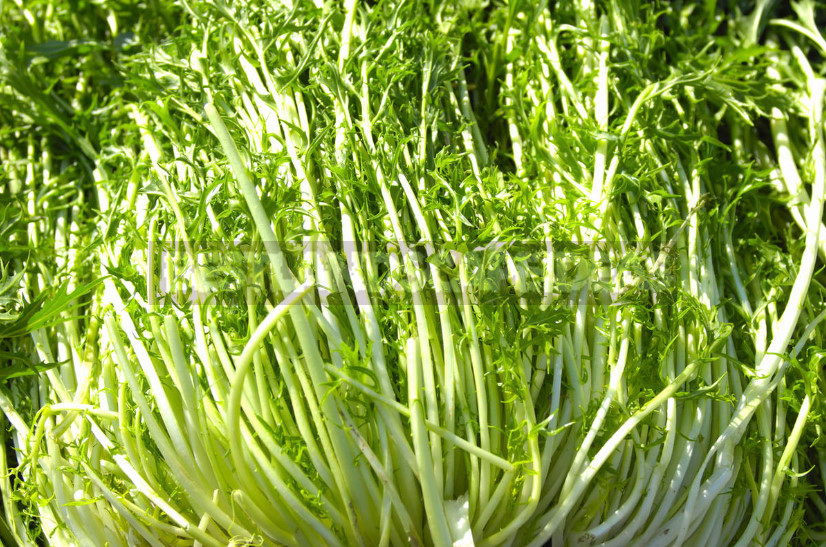
Well-established variety ‘Dude’, ready for cleaning in a month after emergence. Strongly dissected green leaves are particularly tender and incomparable taste, and their rich chemical composition makes this cabbage an ideal option for early spring saturation of the body with vitamins.
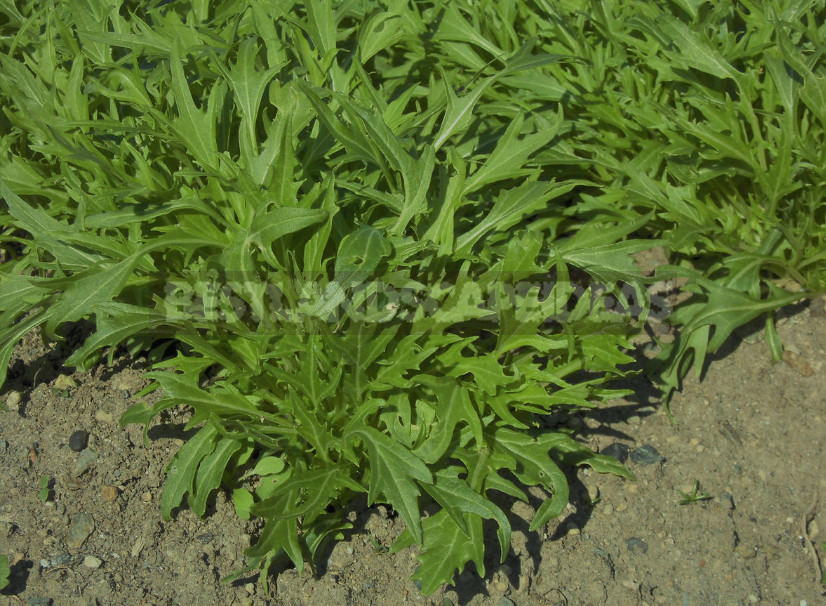
Japanese cabbage of mizuna is rarely found in our beds, but due to its high productivity and extraordinary decoration surely will soon replace some of the old-timers of the garden. And first of all, this Asian will be to the liking of “lazy” gardeners, because her unpretentiousness in care will allow without unnecessary hassle to get a generous harvest of “live” vitamins throughout the year. In this regard, I would also like to note the Chinese woman Pak-Choi — this is another kind of cabbage.
I think, among readers there will be those who already managed to get acquainted with this unusual plant. Share with us in the comments of your experience growing Mizuna and tell us how to achieve a decent harvest from it.
